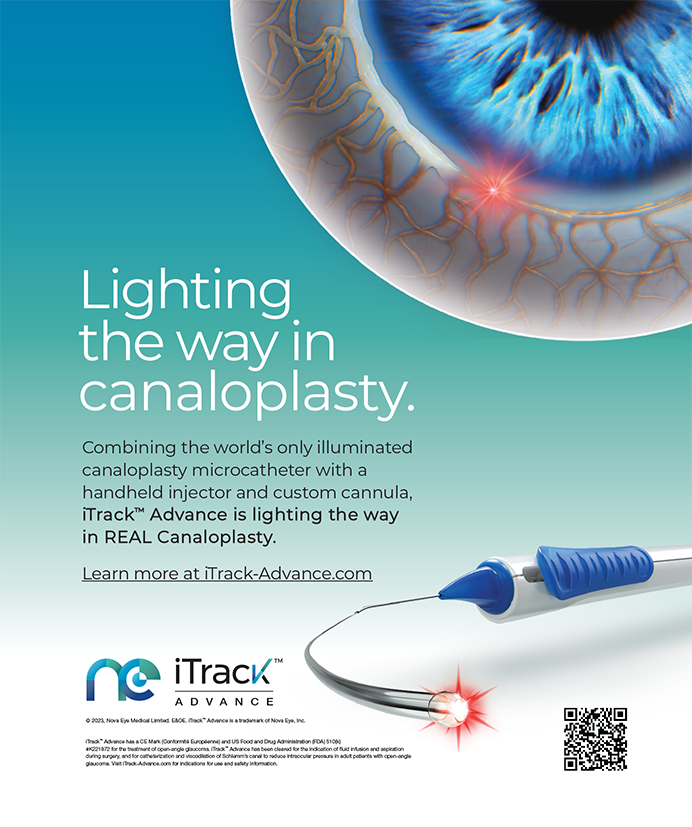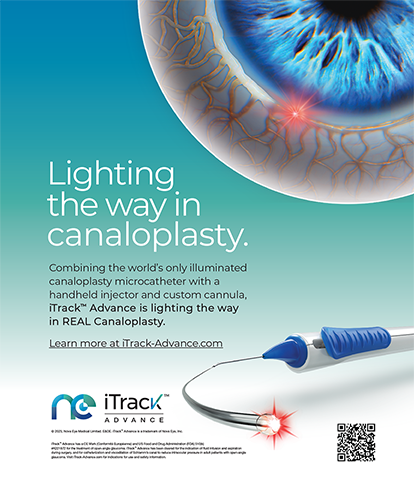Call me an optimist, but with the 2004 presidential election behind us, a strong economic forecast predicted for the upcoming year, and an ever-expanding array of new vision correction procedures slated for FDA approval this year, 2005 could be shaping up to be one of the better years for refractive surgery.
Each January, I seem to mimic the boy who cried wolf by reminding clients (and readers) that there's no better time to invest marketing dollars than during the first fiscal quarter. And each year, most of my clients remind me that January is one of their highest-volume months of the year. Go figure.
If you haven't done so already, there's still time to jump into the marketing fray—not only in the first quarter, but for the entire year. Here's why I'm so optimistic about 2005:
• economic indicators are looking fairly healthy in early 2005;• higher consumer confidence will result in increased LASIK volume;
• increases in consumer spending will raise LASIK volume;
• the public is embracing most of the new refractive technologies;
• the media is still friendly with refractive surgery;
• higher surgical fees are holding steady; and
• surgical results are continuing to improve.
As the focus in refractive surgery advertising returns to the benefits of the procedure and new technological advancements, the public is starting to take a second look at LASIK (remember, with only 3% market penetration, the vast majority of the public is still waiting to undergo the procedure!). Additionally, with expanded refractive IOL options and other new modalities available, there is renewed interest in the market by those who have yet to embrace refractive surgery.
The year 2005 may serve as the high-water mark for overall public awareness of LASIK. An informal survey of patients of our clients that my staff and I recently conducted indicated that general LASIK awareness could be as high as 95%, which is phenomenal name recognition for any product or service. So why is the penetration rate for laser vision correction still well below 5%? Better yet, how do we increase the LASIK penetration rate in 2005?
WHY PENETRATION REMAINS LOWFear
Patients' fear is still their primary deterrent, and it is mainly due to a lack of specific knowledge about the procedure. However, procedures such as Intralase (Intralase Corp., Irvine, CA) and Epi-LASIK have tremendous upside marketing potential to help allay these fears, a fact that I will discuss later in this article.
Money
Finances are the second biggest obstacle to patients' deciding to undergo LASIK. Statistics indicate that the average person cannot afford to write a check for more than $500 without transferring money from a different account, borrowing it from a relative or friend, or using a credit card. Therefore, financing in 2005 becomes even more important, as I will also discuss later.
Lack of Information
General uncertainty about results and long-term postoperative risks or complications is the third largest reason why many patients put off having LASIK. A lack of information causes them to hit the pause button. In order for patients to feel more confident and comfortable that today's procedures are more precise, accurate, and predictable than at any other time in the history of refractive surgery, they need more knowledge about (1) customized LASIK, (2) wavefront-driven diagnostics, (3) expanded treatment parameters,
CRAFT YOUR MESSAGE ACCORDINGLY
To be successful in 2005, your overall marketing strategy must be designed to help patients easily overcome the aforementioned obstacles. This doesn't necessarily mean you must always address the “fear factor” in your advertising, but be aware of this obstacle and design campaigns that reassure patients about how safe and effective refractive surgery is today.
In particular, continue to address the fear issue with your internal marketing efforts when counseling patients and displaying internal signage, as well as in your marketing collaterals. Even if patients do not discuss or admit their fears, the issue is still there and needs to be addressed. If your practice is among those performing Intralase or Epi-LASIK, discussing safety is somewhat easier because these technologies improve LASIK's safety profile. If you have embraced Intralase or Epi-LASIK, then make sure to mention their benefits in your advertising message. If you are not using these technologies, then be prepared to explain to patients why your method of LASIK is safer than that of surgeons who do use them. Obviously, the more Intralase and Epi-LASIK advertising there is in your market, the more you will need to address the issue of safety when you or your staff are confronted with questions from patients. Understand, I am not advocating that you purchase an Intralase unit or the Epi-LASIK system, but from a marketing standpoint, you and your staff should be prepared to address and support your stance on this issue.
EMBRACE FINANCING
Regarding financial obstacles, the higher your fees are for refractive surgery, the more you need to offer financing options. Although the economy is showing signs of improvement, affordability is still a key purchasing factor for consumers. Attractive financing is the only way to make your procedures more affordable without lowering your prices.
In fact, financing options are actually allowing practices to raise their fees for customized LASIK and refractive lens exchange procedures. At approximately the same time that customized LASIK gained FDA approval in 2003, finance companies started to debut a host of interest-free financing options. The combination of incredible technology and incredible affordability has been responsible for surgeons' increased surgical volume and higher fess since 2003.
Today, 24-month, no-interest financing is available, as are plans featuring no money down and no payments for 6 months. For better or worse, financing has become a major part of consumers' lives, and not just for home and auto purchases anymore. People finance everything from home entertainment centers and personal computers to cosmetic and dental procedures, so don't fool yourself into thinking that consumers aren't interested in financing their refractive surgery procedures.
However, just because you actively promote and offer financing doesn't necessarily mean that the majority of your patients will take advantage of the opportunity. Anywhere from 15% to 25% of your patients will choose financing, although the majority continue to use their personal credit cards or other means. To help defray the cost of finances, consider raising your fees.
THE FUTURE IS HERE
The third and final component of your advertising strategy should focus on helping patients understand the predictability, precision, and accuracy of today's refractive surgery technology. Even after you've addressed their fears and finance issues, many patients hesitate to have surgery because they're waiting for the next-generation procedure that they perceive will be better. It's your job to enlighten patients on the recent advances, FDA labelings, and proven results now achieved with today's technology. Patients must understand that the next generation in refractive technology is already here.
INTERNAL MARKETING
The job of assuring patients that it's okay to have their vision corrected is now mainly accomplished through internal marketing measures. Once the inquiry has been generated and the office visit has occurred, your internal marketing campaigns should kick into high gear. Your refractive counselors or coordinators should be well prepared to address all the issues patients will have, and they need the resources necessary to walk patients through a process that leaves no concern unresolved. Do not rely on your external marketing campaigns to accomplish this task for you. Advertising should not be confused with patient education. The latter should take place within the practice and be designed to help patients make an informed decision about their procedure and your practice.
QUALITY, NOT QUANTITY
Finally, avoid being too ambitious in your 2005 advertising campaigns and only address the three Fs: fear, financing, and future results. You must also take advantage of the three Ts: target, tease, and titillate. Target the right demographic patient base that has been waiting for the next generation of procedures, tease them with the possibilities of how a simple change in their vision can truly change their lives, and titillate them with the unlimited possibilities that lie before them with the completion of their refractive procedure. Remember what the vast majority of most LASIK patients say after their procedure: “It's one of the best things that's ever happened to me!” If that's not worth advertising, nothing is. Wishing you all the best in 2005. n
Michael W. Malley is President and Founder of the Centre for Refractive Marketing (CRM Group), an ophthalmic consulting/advertising agency established in 1988. Mr. Malley may be reached at (713) 839-0202; mike@refractivemarketing.com
.

